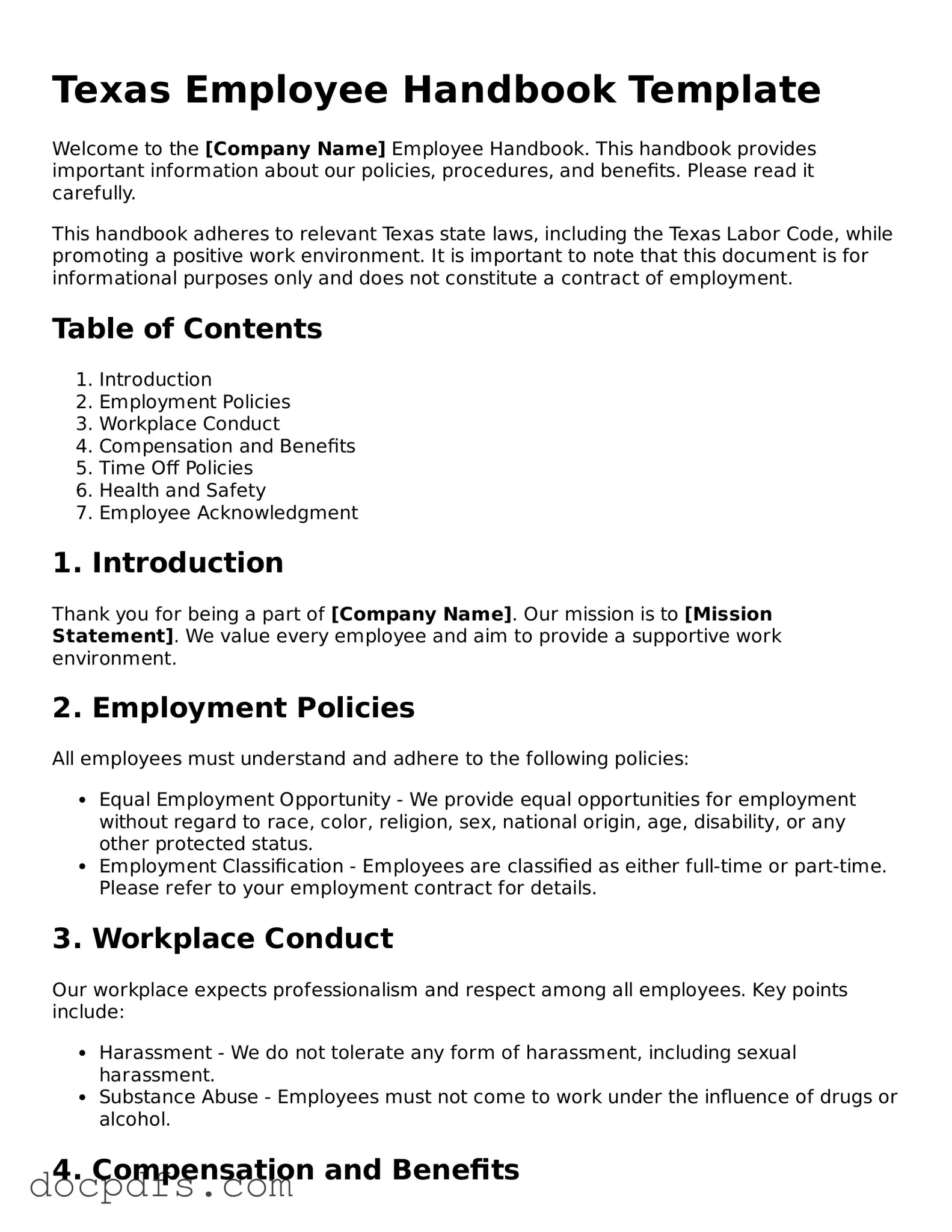The Texas Employee Handbook form serves as a vital document for employers and employees. It outlines the company's policies, procedures, and expectations. By providing clear guidelines, it helps ensure that employees understand their rights and responsibilities. This form also serves to protect the employer by documenting the policies that govern workplace behavior and practices.
All employers in Texas should complete the Texas Employee Handbook form. This includes businesses of all sizes, from small startups to large corporations. Additionally, new employees should receive a copy of the handbook to familiarize themselves with company policies. Regular updates to the handbook may also be necessary to reflect changes in laws or company practices.
What key topics should be included in the Employee Handbook?
An effective Employee Handbook should cover a variety of important topics, including:
-
Company mission and values
-
Employment policies (e.g., hiring, termination, and discrimination)
-
Workplace conduct and expectations
-
Compensation and benefits
-
Leave policies (e.g., sick leave, vacation, and family leave)
-
Health and safety guidelines
Including these topics ensures that employees have a comprehensive understanding of the workplace environment.
How often should the Employee Handbook be updated?
The Employee Handbook should be reviewed and updated at least annually. Changes in employment law, company policies, or organizational structure may necessitate more frequent updates. Regular reviews help ensure that the handbook remains relevant and compliant with current regulations.
What should I do if I have questions about the Employee Handbook?
If you have questions regarding the Employee Handbook, it is advisable to speak with your supervisor or the human resources department. They can provide clarification on specific policies and procedures. Additionally, consulting with a legal professional may be beneficial for more complex inquiries or concerns about compliance.
Is it mandatory for employees to sign the Employee Handbook?
While it is not legally required for employees to sign the Employee Handbook, obtaining a signed acknowledgment can be beneficial. A signature indicates that the employee has received, read, and understood the handbook. This documentation can serve as evidence that the employee is aware of company policies, which may be important in case of disputes.
